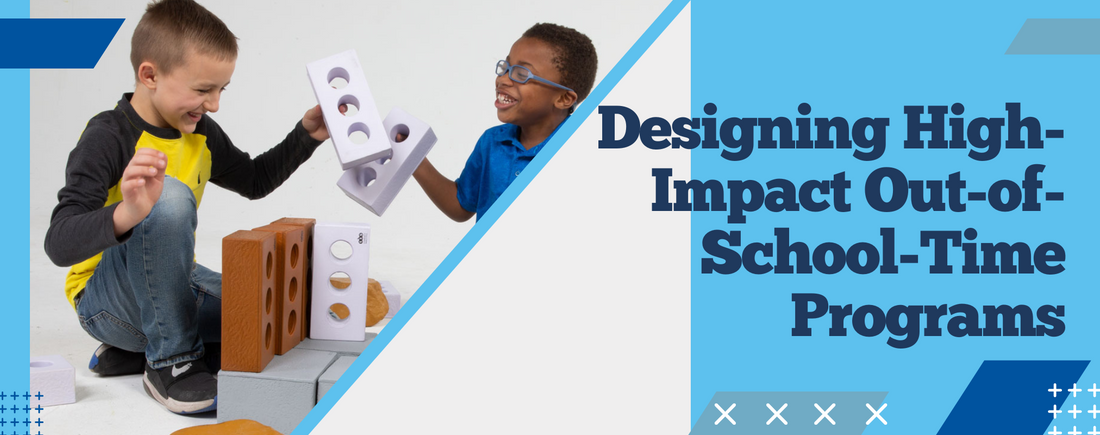When the last bell rings, some of the best learning is just getting started.
Out-of-school-time (OST) programs build on what students learn during the day—offering personalized instruction, team-building experiences, and opportunities to collaborate with peers on activities they enjoy. Whether diving into hands-on projects, getting one-on-one support, or simply having a space where they feel seen and encouraged, these programs play a powerful role in student growth.
In our latest EdWebinar, a panel of education experts shared what makes OST programs truly effective—from boosting participation to designing experiences that leave a lasting impact.
Keep reading for key takeaways, then watch the full webinar to explore practical strategies you can bring to your own program.

The Critical Role of OST Programs in Student Achievement and Well-Being
The time students spend outside the classroom plays a huge role in how they show up inside it. Clubs, field trips, creative projects, and after-school programs help students stay connected, motivated, and confident. But access to those experiences isn’t equal—and the difference adds up fast. As Lupine Reppert, executive director of CalSAC, puts it:
“Wealthy families clearly understand the value of out-of-school time—they’re making sure their kids are in those programs. As a result, by sixth grade, those children have experienced 6,000 more hours of learning.”
This isn’t just a gap in instruction, but in enrichment, exposure, support, and real-world learning. When students don’t get those opportunities, it shows up in their engagement, attendance, and sense of belonging.
High-quality OST programs help level the playing field. They give students who haven’t always had access to these opportunities a fair shot—at discovering new interests, building meaningful relationships, and getting the kind of support that every young person deserves.

What Makes an OST Program Work
Strong OST programs don’t start with a rigid curriculum—they start with the students. What do they need? What’s missing from their day? What’s going to make them want to participate?
That kind of flexibility gives educators room to respond to their community instead of sticking to a one-size-fits-all approach. It allows programs to reflect what’s actually relevant to students—building on their interests, strengths, and lived experiences.
Marcy Richards, who leads 21st Century Community Learning Centers in Anchorage, AK, puts this into practice every day. In a district where 116 languages are spoken, she built hands-on programs that didn’t depend on language to get students involved. The focus was on doing, not just understanding directions—and it worked. Students connected through the work itself.
Providing a high-quality OST program doesn’t have to be expensive. As Marcy explains in the webinar, expanding programs and keeping great staff “doesn’t have to cost a thing.” With local partners and a little creativity, OST leaders can bring in things like robotics, coding, and other experiences that keep students engaged, confident, and looking ahead.

Increasing Engagement by Centering Student Interests
A question program developers ask all the time is how to integrate educational elements into activities students actually enjoy. But the issue isn’t integration—it’s treating “education” and “fun” as if they’re mutually exclusive.
As Dane Jaber, instructional supervisor and SECME coordinator for Miami-Dade County Public Schools, explains, “No one is staying after school for another math worksheet. But when students are presented with a challenge, they learn as they think critically to overcome that challenge.”
Designing challenges that excite students doesn’t require thinking like them—just noticing where their curiosity leads them. When students are given the space to explore, they’ll show you what they care about—whether it’s sports, character design, music, or puzzles. Their interests point directly to the kinds of activities that will keep them engaged and motivated to go deeper.
Centering student voices in OST programs gives kids agency—reminding them that their ideas matter and their passions can lead their growth. By helping shape the activities they take part in, they gain confidence, and educators gain insight into how to better support them.
Learning, Unlimited
When some students hear “out of school,” they picture more of the same—extra worksheets, more sitting still. But strong OST programs aren’t just a longer version of the school day, they create something different: new ways to learn, new opportunities to connect, and new doors to walk through.
Making that happen takes more than good intentions—it takes planning, creativity, and a real understanding of what students actually need.
In this webinar, you’ll hear directly from leaders who’ve done the work—who’ve tested ideas, built partnerships, and figured out what really keeps students engaged and coming back.
Watch the full recording or listen along to the EdWebinar and take away strategies you can use to create OST experiences that are relevant, equitable, and built to truly serve your community. For even more inspiration on boosting OST learning, be sure to check out our Summer Solutions Guide.

